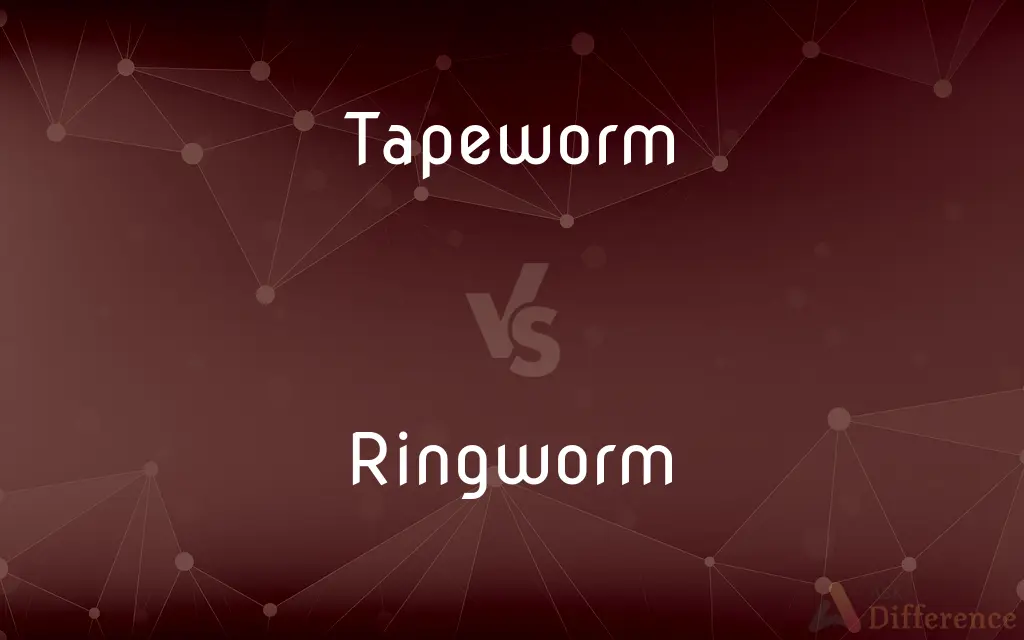Tapeworm vs. Ringworm — What's the Difference?

Difference Between Tapeworm and Ringworm
ADVERTISEMENT
Compare with Definitions
Tapeworm
Any of various long segmented parasitic flatworms of the class Cestoda that lack a digestive system and have hooks or suckers for attaching to the intestines of vertebrates, including humans. Also called cestode.
Ringworm
Any of a number of contagious skin diseases caused by several related fungi, characterized by ring-shaped, scaly, itching patches on the skin and generally classified by the location on the body. Also called tinea.
Tapeworm
(countable) Any parasitical worm of the class or infraclass Cestoda, which infest the intestines of animals, including humans, often infecting different host species during their life cycle.
Ringworm
A contagious fungal infection of the skin, characterised by ring-shaped discoloured patches, covered by vesicles or scales.
In superficial mycoses infection is localised to the skin, the hair, and the nails. An example is ringworm or tinea, an infection of the skin by a dermatophyte.
Tapeworm
(countable) A broad fish tapeworm, Diphyllobothrium latum.
ADVERTISEMENT
Ringworm
A contagious affection of the skin due to the presence of a vegetable parasite, and forming ring-shaped discolored patches covered with vesicles or powdery scales. It occurs either on the body, the face, or the scalp. Different varieties are distinguished as Tinea circinata, Tinea tonsurans, etc., but all are caused by the same parasite (a species of Trichophyton).
Tapeworm
(uncountable) Infection by tapeworms.
Ringworm
Infections of the skin or nails caused by fungi and appearing as itching circular patches
Tapeworm
Any one of numerous species of cestode worms belonging to Tænia and many allied genera. The body is long, flat, and composed of numerous segments or proglottids varying in shape, those toward the end of the body being much larger and longer than the anterior ones, and containing the fully developed sexual organs. The head is small, destitute of a mouth, but furnished with two or more suckers (which vary greatly in shape in different genera), and sometimes, also, with hooks for adhesion to the walls of the intestines of the animals in which they are parasitic. The larvæ (see Cysticercus) live in the flesh of various creatures, and when swallowed by another animal of the right species develop into the mature tapeworm in its intestine. See Illustration in Appendix.
Tapeworm
Ribbon-like flatworms that are parasitic in the intestines of humans and other vertebrates
Share Your Discovery

Previous Comparison
Microinstruction vs. Microprogram
Next Comparison
Conflict vs. Strife













































